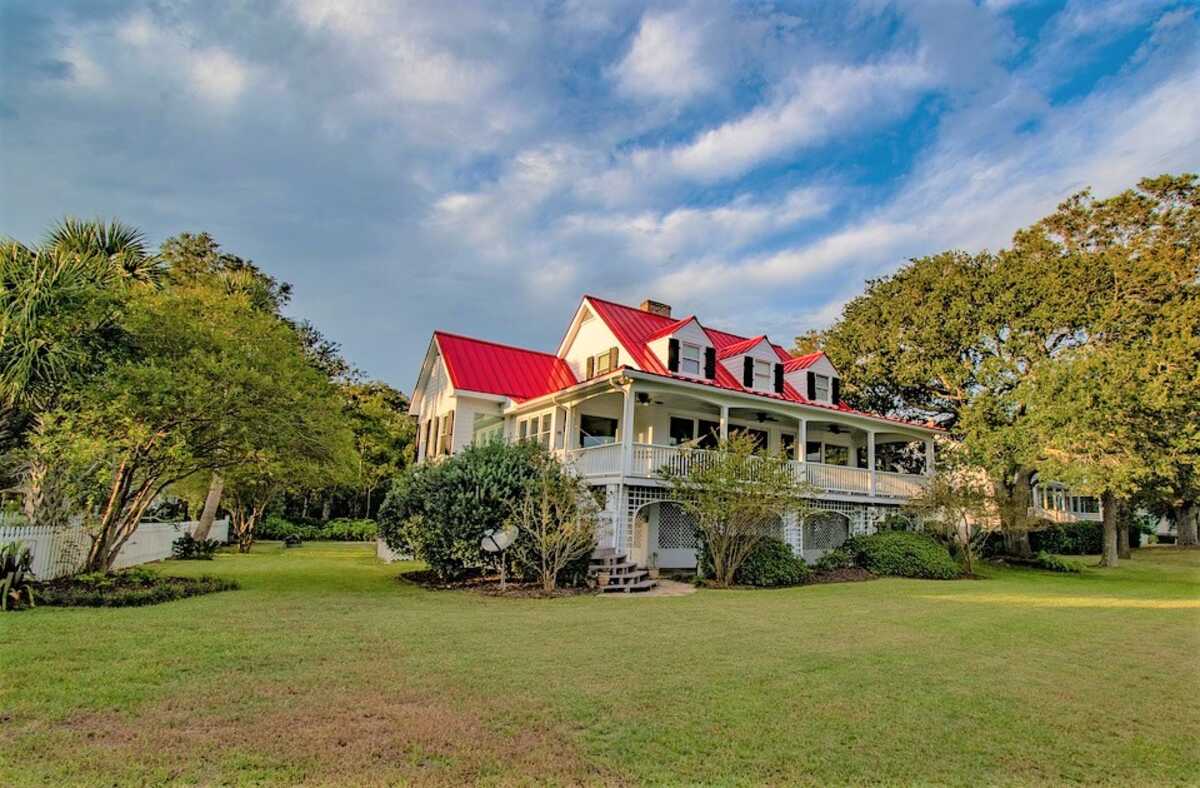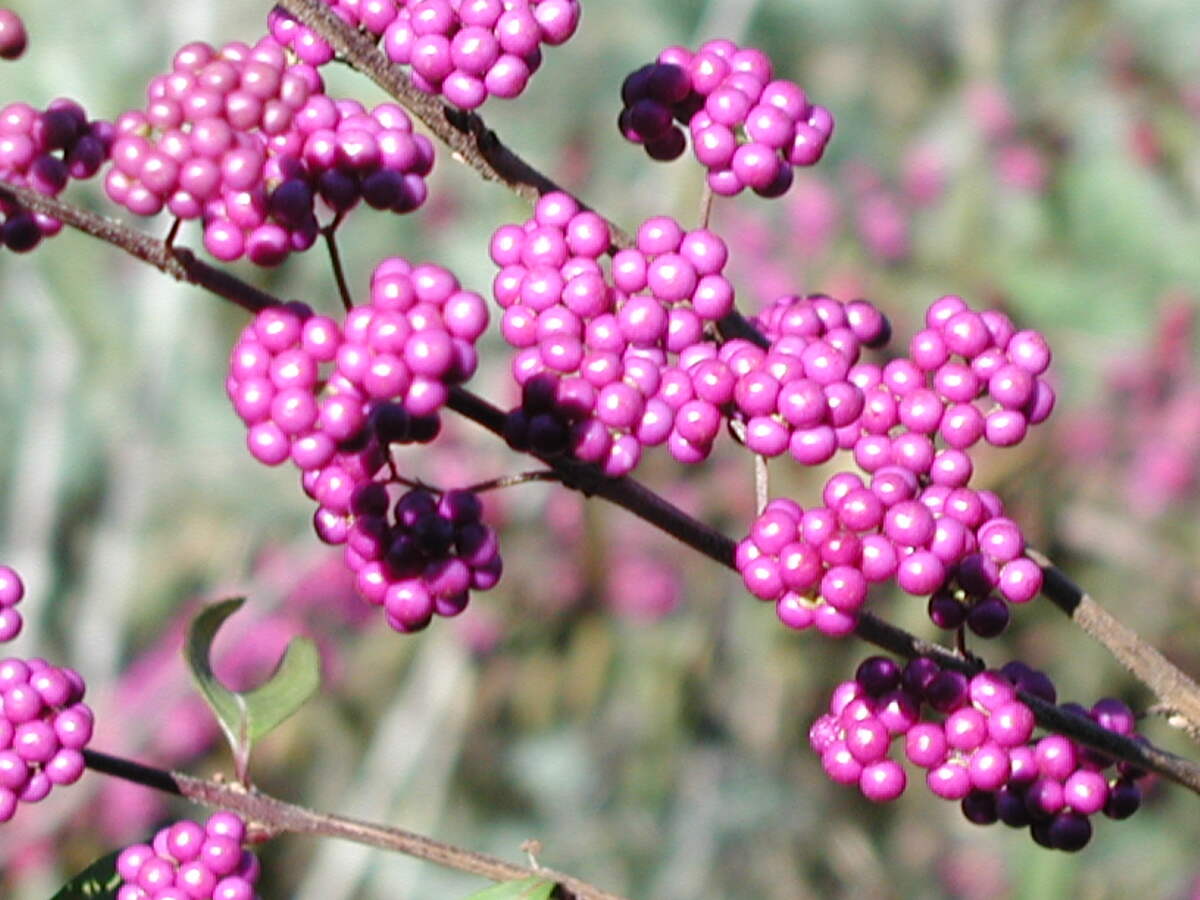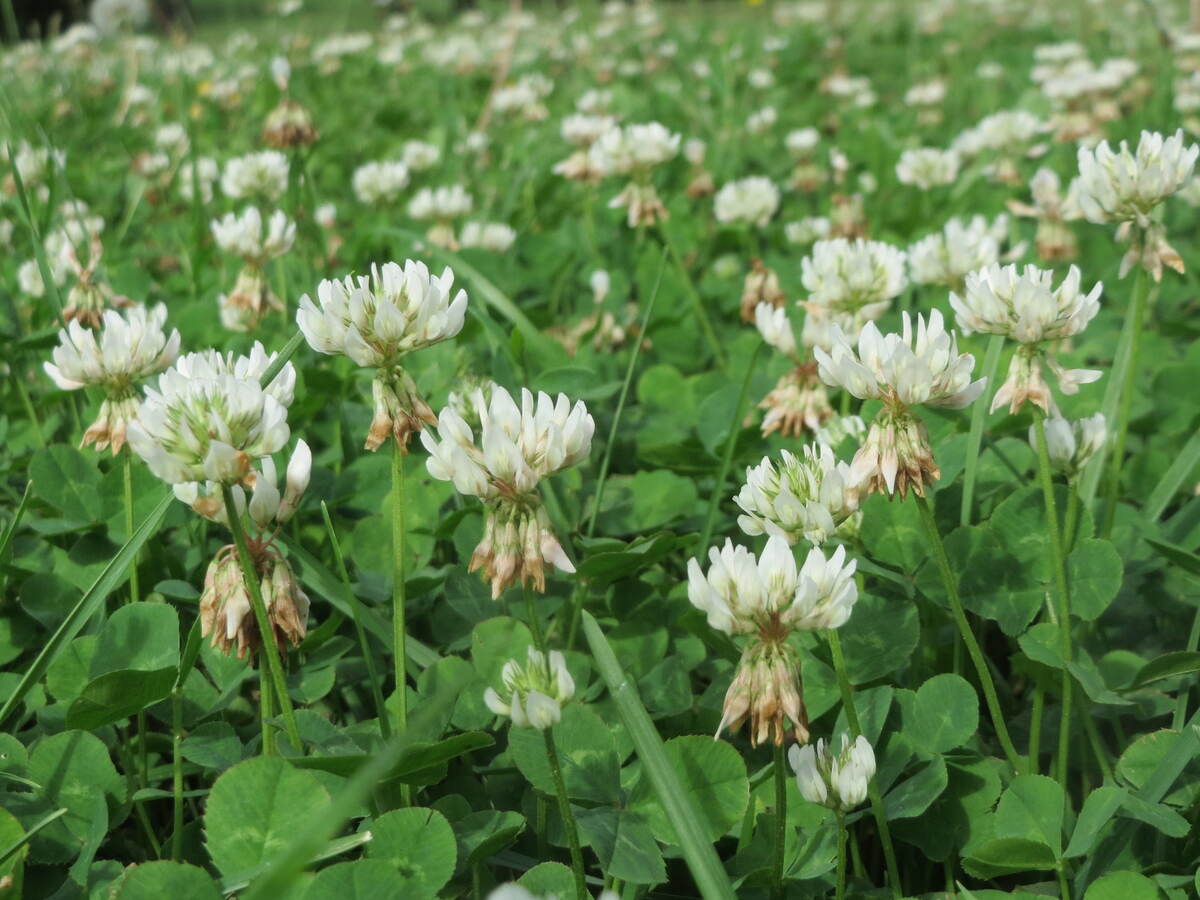
Not everything that springs to life in your Palmetto State lawn is desirable. Common lawn weeds like dallisgrass and dandelion take precious resources like sunlight, water, and nutrients away from your grass, leaving it weak and patchy.
You can categorize your South Carolina weeds into three types:
- Grassy weeds
- Broadleaf weeds
- Sedges
Out of those three types, here’s what you can expect to find popping up on your lawn:
Grassy Weeds
Grassy weeds originate from a seed as a single leaf, with leaf blades appearing to be longer than they are wide, and tend to have parallel veins.
The most common grassy weeds in South Carolina include the following:
1. Large Crabgrass (Digitaria sanguinalis)
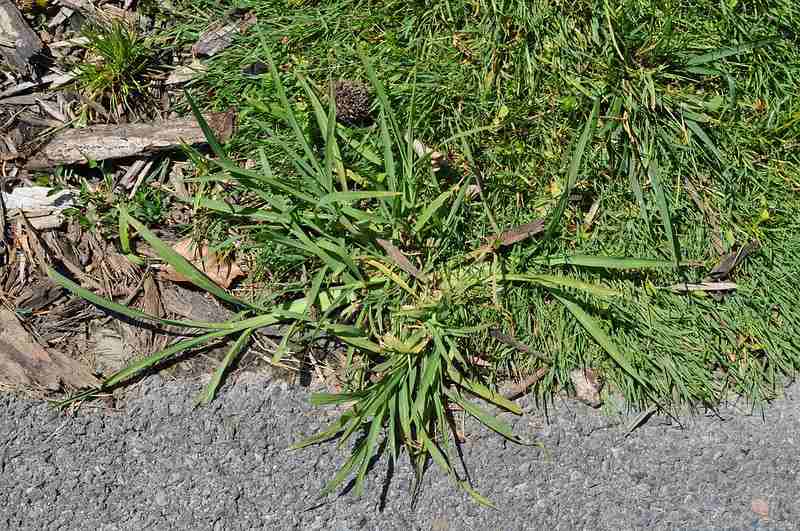
Crabgrass is a native of Europe and Eurasia but was introduced to the U.S. in 1849 as a forage for livestock. Unfortunately, crabgrass is a stubborn and aggressive weed, and once it’s established, it is difficult to get rid of it, making it a nuisance for farmers and homeowners alike.
Crabgrass is tolerant to heat and drought. In fact, crabgrass seeds germinate best in warm weather, producing over 150,000 seeds, which is why it’s become such a problem in the South.
Large crabgrass, also known as “hairy crabgrass,” can be identified by fine hairs along the leaves. The leaves are about 1 to 8 inches long, and the base of the stem is purplish.
- Life cycle: Annual (summer)
- Weed type: Grass
- Where it thrives: Turf, crop fields
- How to identify large crabgrass: Grows in tall, upright clumps that are lighter green than the grass. Leaves are hairy, long, narrow, and flat, with a prominent midvein. Purple, branching stem base.
If you’ve had enough of this pesky, unsightly weed, learn “How to Get Rid of Crabgrass in Your Yard” in our article.
2. Dallisgrass (Paspalum dilatatum)
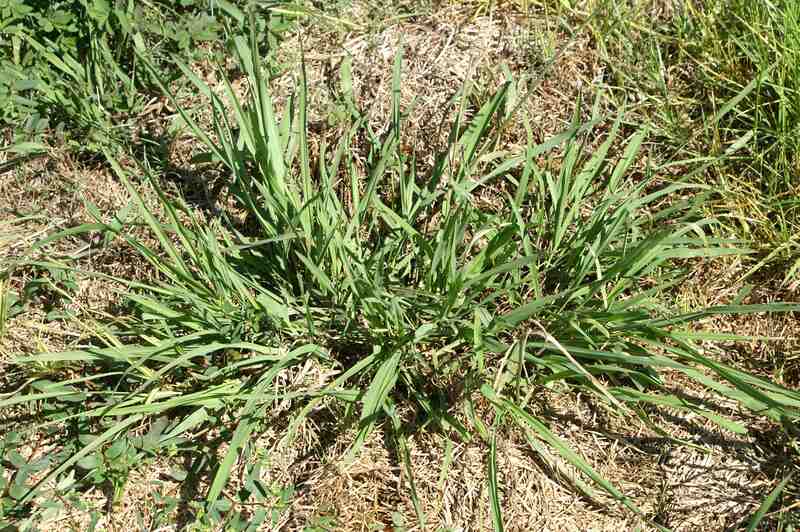
A forage plant introduced from South America in the 1800s, dallisgrass has since naturalized in many areas in the Southern U.S. Dallisgrass establishes itself in ugly, uneven clumps across lawns, roadsides, orchards, vineyards, and landscapes. It adapts to low mowing heights and has a fast growth rate.
Compared to many non-weed turfgrasses, dallisgrass features wide and coarse-textured gray-green leaf blades (1/4–1/2 inch). Its stiff clumps also present a tripping hazard and are highly competitive with turfgrasses in fertilized areas.
- Life cycle: Perennial
- Weed type: Grass
- Where it thrives: Wet spots and heavily irrigated turfgrasses
- How to identify dallisgrass: Grows in a clump, with underground stems (rhizomes) growing outward. The base of the grass stems have purple coloration. Can be mistaken for both hairy and smooth crabgrass.
Get rid of dallisgrass with the information in our article.
3. Annual Bluegrass (Poa annua)
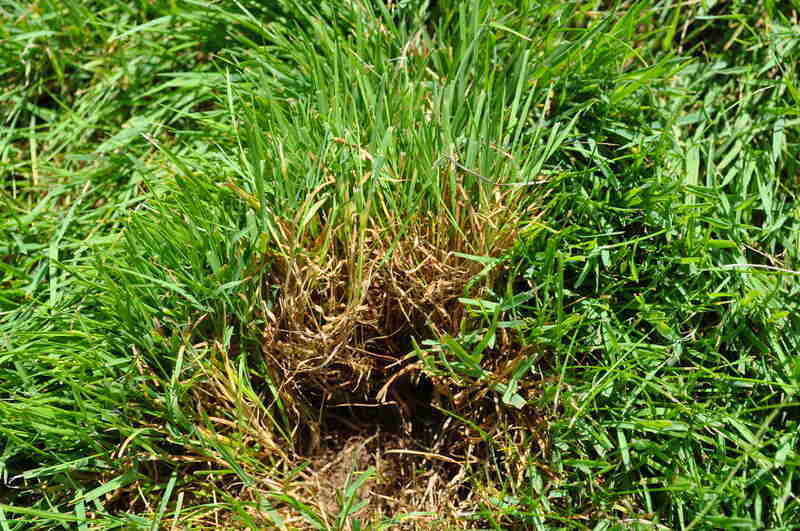
Annual bluegrass is native to Europe but can now be found worldwide. It is a cool-season grass that spreads by seed and usually isn’t a significant problem, but it can survive low mowing heights of less than an inch and still reseed.
Annual bluegrass has a fine texture and smooth, bright green leaves with a boat-shaped tip. It produces greenish-white seed heads that appear during spring.
- Life cycle: Annual (winter)
- Weed type: Grass
- Where it thrives: Moist, compacted soil
- How to Identify annual bluegrass: Light green, bunch-type grass blades with a boat-shaped tip. Has fibrous roots and a membranous ligule (growth between the stem and leaf).
Check out this article to learn how to get rid of annual bluegrass.
4. Goosegrass (Eleusine indica)
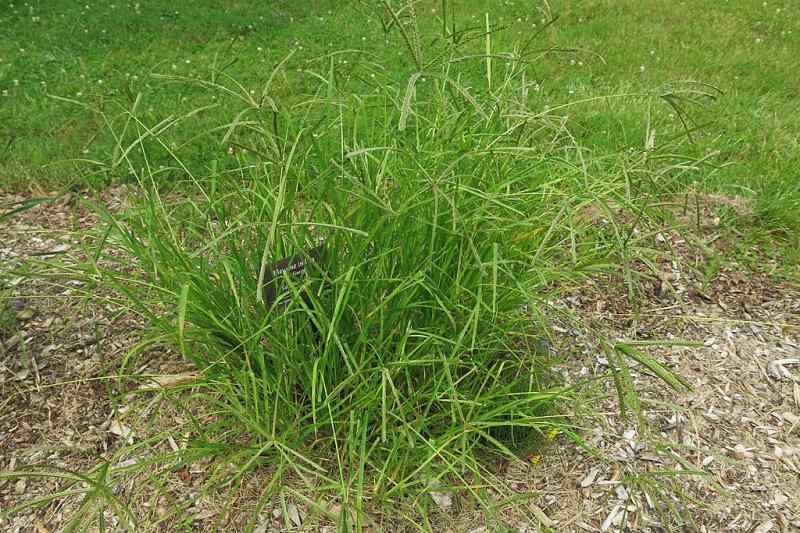
Originally native to Eurasia, goosegrass reproduces by seeds and usually emerges around April to September. It has a history of developing resistance to herbicides and can be a very competitive weed should it emerge with or shortly after a crop.
Goosegrass is susceptible to disease-causing viruses like sugarcane mosaic. It’s considered to be one of the five most troublesome weeds in the world and has been cited as a problem for over 46 different crop species in over 60 countries.
- Life cycle: Annual (summer)
- Weed type: Grass
- Where it thrives: Areas of heavy wear and compacted areas
- How to identify goosegrass: Grows to 2 1/2 feet wide and is sometimes mistaken for crabgrass. Goosegrass is darker green in color and has a whitish, silvery color near its flattened stem base.
Discover how to get rid of goosegrass in our article.
5. Quackgrass (Elymus repens)
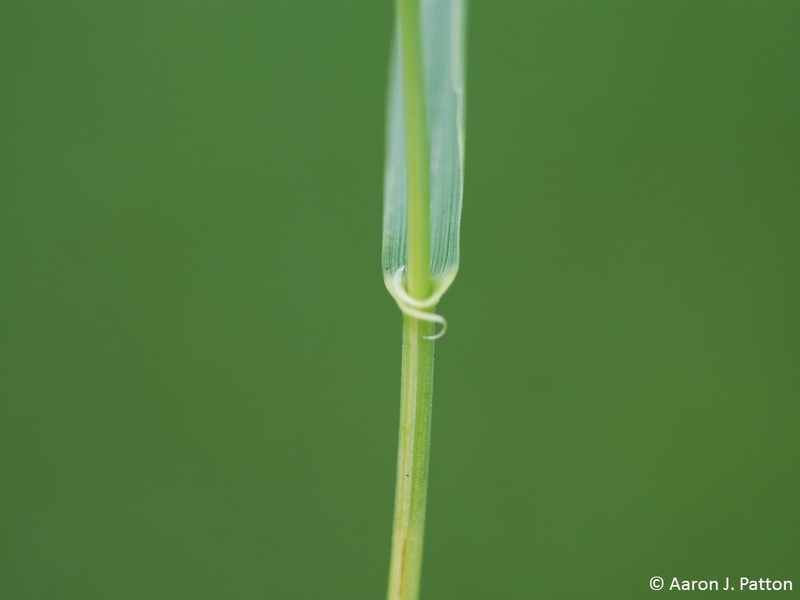
Quackgrass is a sod-forming grass that crowds out other grasses and weeds by releasing chemicals that affect the growth of other plants. Disturbed soil near quackgrass can help its spread, so tilling your soil will only increase its propagation.
Due to its invasive nature, nearly pure patches of this weed can be formed. These patches easily stand out due to their ashy, blue-green color.
Like with most weeds, the best way to prevent quackgrass is to maintain a dense, healthy lawn. If you need to reestablish your lawn after a quackgrass infestation, laying down sod instead of overseeding your lawn makes it more difficult for quackgrass to resurface.
- Life cycle: Perennial
- Weed type: Grass
- Where it thrives: Crop fields, forages, turf
- How to identify quackgrass: Clasping auricles, short membranous ligule, with hairy lower sheaths and usually smooth upper sheaths
Broadleaf Weeds
As the name suggests, broadleaf weeds have wider leaves than grass weeds. They emerge from seeds with two leaves. Weeds in this category also have leaves with net-like veins. Many broadleaf weeds also have showy flowers.
Some common examples of broadleaf weeds in South Carolina are:
6. Common Dandelion (Taraxacum officinale)
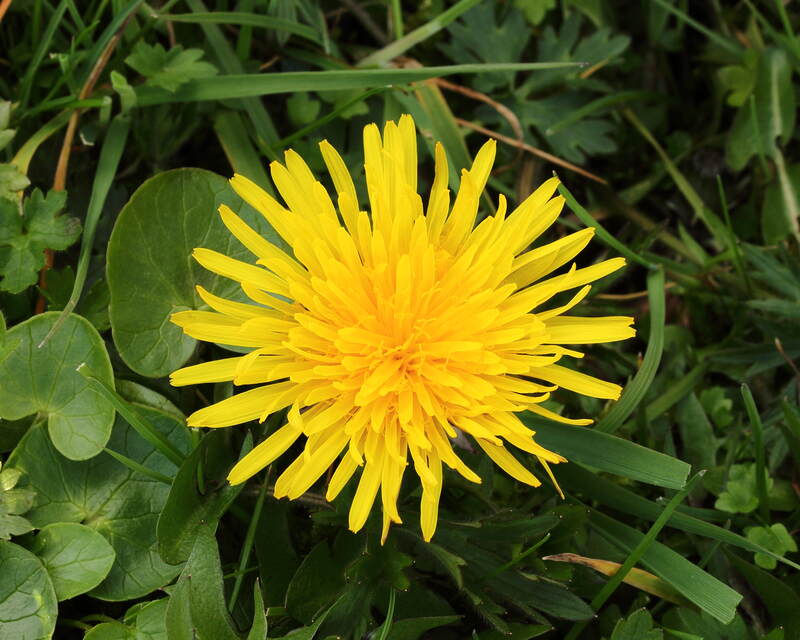
Found throughout America and Canada, the common dandelion forms rosettes of leaves with yellow flowers at the center. The name “dandelion” comes from its leaf’s resemblance to a lion’s teeth. These leaves emit a milky sap when destroyed.
The head of the dandelion flower may look like one single flower, but it is actually made of hundreds of individual flowers that will later develop into seed heads. These seeds are connected to fluffy parachute-like tufts called “pappus” which allows the seeds to drift across vast distances so that the weed can spread.
- Life cycle: Annual (winter) or perennial
- Weed type: Broadleaf
- Where it thrives: Weak, thin turf; home lawns
- How to identify common dandelion: Common dandelion leaves are deeply toothed and emit milky sap, with lobes usually pointing backward to the crown.
Learn how to eliminate these yellow invaders in our article: “How to Get Rid of Dandelions.”
7. White Clover (Trifolium repens)

White clovers are low-growing plants with a white, crescent-shaped band on each leaflet. It has trifoliate leaves consisting of three oval-shaped leaflets and white flowers that appear during summer.
Once used in lawn seed mixes, it thrives even in unfertilized areas and grows best where temperatures range from 50 to 85 F. However, due to its shallow root system, it doesn’t fare well in dry soils. It can be a host to “clover rot” and should not be used too much as a cover crop.
White clovers are spread by stolons that produce shoots and roots at nodes along the stem.
- Life cycle: Perennial
- Weed type: Broadleaf
- Where it thrives: Pastures, roadsides, and lawns
- How to identify white clover: Its leaves palmately trifoliate, sometimes quadrifoliate, from stolons, with fibrous roots from stolons and taproots. Its flowers are white, with purple sinuses between each calyx lobe.
Clover is a beneficial food source for pollinators, but if you can’t stand a clover-filled lawn, learn how to get rid of clover without killing your grass.
8. Common Chickweed (Stellaria media)
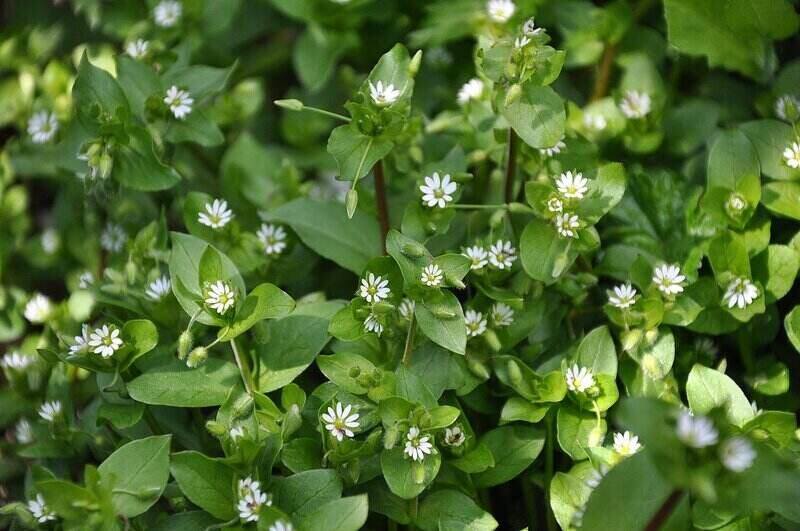
Common chickweed is a low, spreading weed with smooth, dark gray-green, oval-shaped leaves that grow opposite of each other. Chickweed has tiny white flowers with five petals that are so deeply indented that they appear to have ten petals.
Common chickweed germinates during cool, wet weather and can produce over 800 seeds, which lay dormant for up to 10 years.
Chickweed serves as a host for undesirable insects such as thrips, spider mites, chickweed geometer moth larvae, and venerable dart larvae. It can also host viruses like the cucumber mosaic virus and tomato spotted wilt virus.
Despite this, it’s edible and can be added to salads and other foods. But washing the plant before consuming it is always a good idea.
- Life cycle: Annual (winter)
- Weed type: Broadleaf
- Where it thrives: Moist, shady areas
- How to identify common chickweed: Leaves are oval-shaped with opposite arrangement, with shallow, frail fibrous roots.
Learn to get rid of common chickweed in our article.
9. Pink Sorrel (Oxalis articulata)
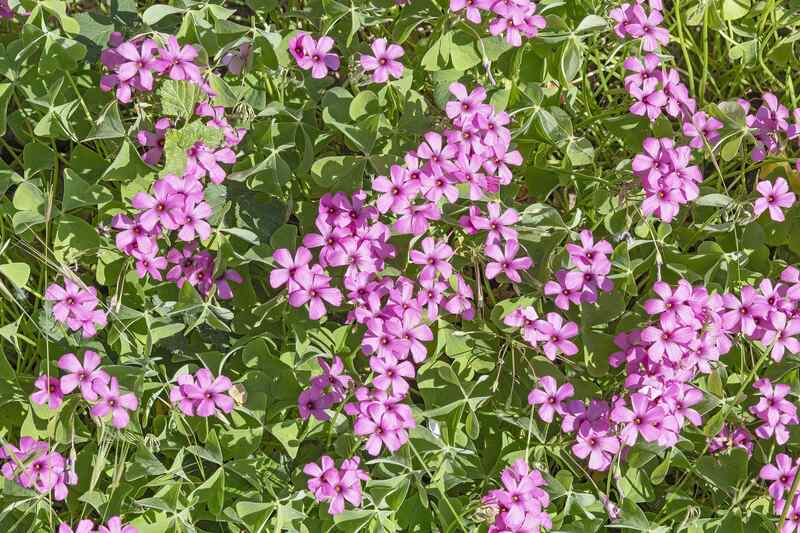
Pink sorrel is commonly identified by its bright pink flowers with leaves that fold at night. It blooms once during spring and then again in fall. Pink sorrel thrives in areas with full sun to partial shade and moist to dry soil but will go dormant during hot summers if it doesn’t get any water.
This type of weed is dense and mounded, with its flowers partially concealed by the foliage. It’s relatively pest-free, almost impossible to kill, and has bulb-like rhizomes.
Its leaves are classified as poisonous due to their oxalates, although serious effects are typically limited to ingestion of large amounts. While there are no documented cases in humans, it can cause cramps, trembling, and staggering in animals.
- Life cycle: Annual or perennial (depending on climate)
- Weed type: Broadleaf
- Where it thrives: Moist, well-drained soil
- How to identify pink sorrel: Their five-petaled pink flowers close at night along with their compound leaves; they are mounded and low.
Learn to get rid of sorrel by reading our article.
10. Broadleaf Plantain (Plantago major)
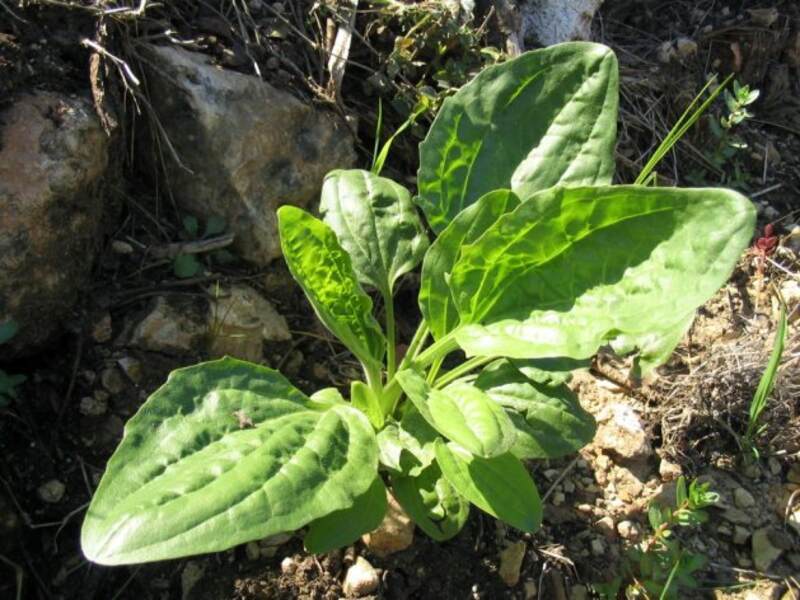
Called “white man’s footprint” by Native Americans for appearing and thriving in areas around European settlements, broadleaf plantain usually grows in lawns along roadsides. This pesky plant is able to resist mowing due to its low basal leaves.
While broadleaf plantain is edible and rich in calcium and vitamins, consuming large quantities can cause a drop in blood pressure. They’re wind-pollinated and could produce over 20,000 bitter-tasting orange to black seeds.
To Note: Broadleaf plantain is in no way related to the type of banana fruit called plantain.
- Life cycle: Perennial but occasionally also annual
- Weed type: Broadleaf
- Where it thrives: Compacted soil or soils disturbed by humans
- How to identify broadleaf plantain: It has a rosette of leaves that are elliptic or oval in shape and feature prominent veins.
Plantain is a common weed in the Palmetto State, but that doesn’t mean you have to let it mar the appearance of your lawn. Learn how to get rid of broadleaf plantain in our article.
11. Spotted Spurge (Euphorbia maculata)
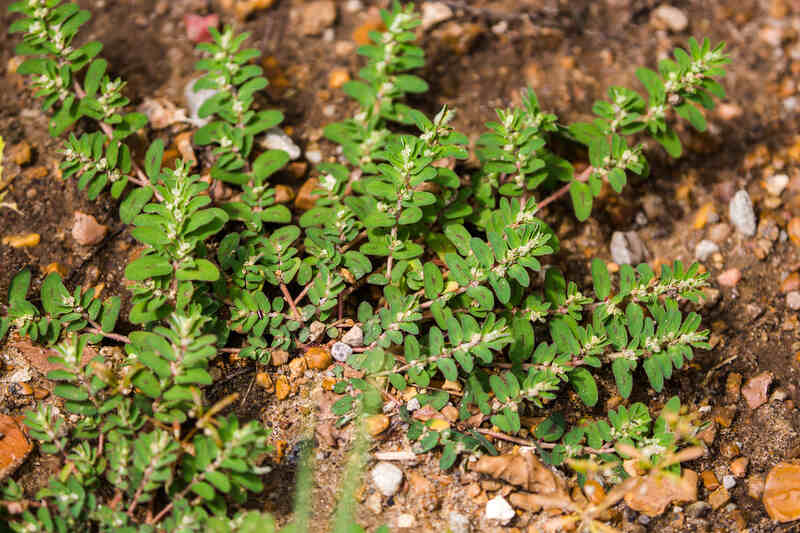
Spotted spurge, also called prostrate spurge, is a low-growing plant that thrives in almost any open area, including sidewalk cracks and lawns. It is native to eastern North America and tends to overgrow and smother desirable plants. It forms a rangy to dense mat of foliage, with weeds germinating best in warm soil when temperatures are above 75 F.
The best means of prevention is maintaining a thick, healthy turf through fertilization, irrigation, and proper mowing.
When broken, the stems of spotted spurge secrete a milky sap that can irritate some people’s skin. Spotted spurge is also highly toxic to sheep.
- Life cycle: Annual (summer)
- Weed type: Broadleaf
- Where it thrives: Poor, compacted soil in full sun
- How to identify spotted spurge: Leaves are oppositely arranged, oblong in shape, with minutely serrated edges; its stems, flowers, leaves, and fruit are hairy; red spots mark the leaf halfway down its center vein.
Discover ways to get rid of spotted spurge in our article.
12. Henbit (Lamium amplexicaule)
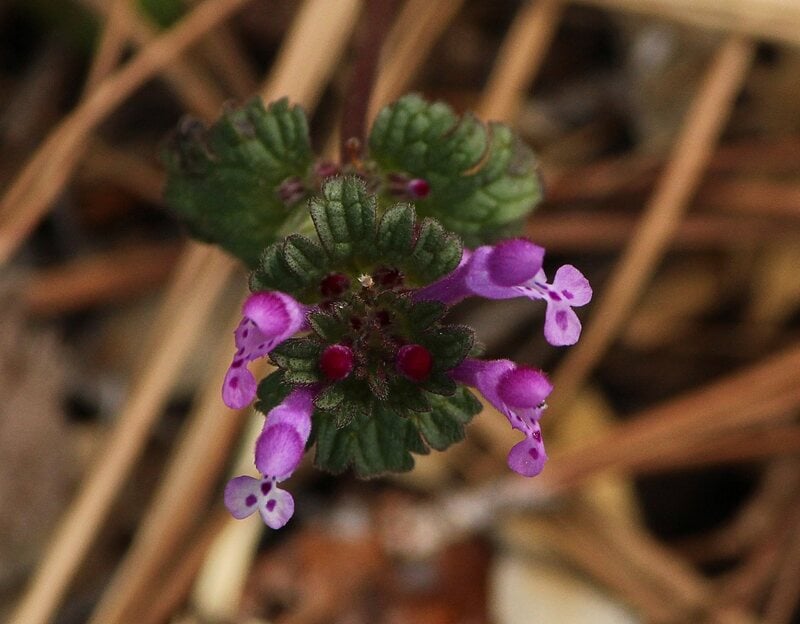
Henbit is a sparsely hairy weed with green to purple stems. Its leaves are broadly egg-shaped and have bluntly toothed margins with noticeable veins underneath. Henbit’s distinct reddish-purple flowers bloom in the spring and are arranged in whorls at the top of the stems.
This weed is very common in the U.S. and occurs in open disturbed sites, often in home lawns, fields, and roadsides. It can quickly invade thin turf areas, especially where there’s soil that’s too moist. Its plants are not too affected by mowing due to its prostrate growth habit.
- Life cycle: Annual (winter)
- Weed type: Broadleaf
- Where it thrives: Thin turf areas with overly moist soil and shade
- How to identify henbit: Distinct reddish-purple flowers; it features opposite leaves that are dark green on top but lighter green below with a triangular to circular shape.
If henbit’s flowers aren’t your cup of tea, learn how to get rid of henbit to restore your lawn’s uniform appearance.
13. Common Lespedeza (Kummerowia striata)

Common lespedeza, or Japanese clover, is a non-native weed that can easily choke out thin turf. It’s a mat-forming summer annual with wiry stems and dark green leaves arranged by threes.
Since they grow close to the ground, these weeds are difficult to cut with a lawn mower. Increase the mowing height and keep the soil’s pH at the correct levels for your turfgrass type to discourage their growth. Hand-pulling can be an option, too, especially in areas where herbicides pose a threat to your South Carolina native plants.
- Life cycle: Annual (summer)
- Weed type: Broadleaf
- Where it thrives: Areas with low nitrogen fertility, thin turf, and dry, compacted soils
- How to identify common lespedeza: It has three smooth, oblong leaflets with parallel veins; stems harden and become woody as they mature; flowers are purple to pink and present in the leaf axils.
14. Smallflower Bittercress (Cardamine parviflora)
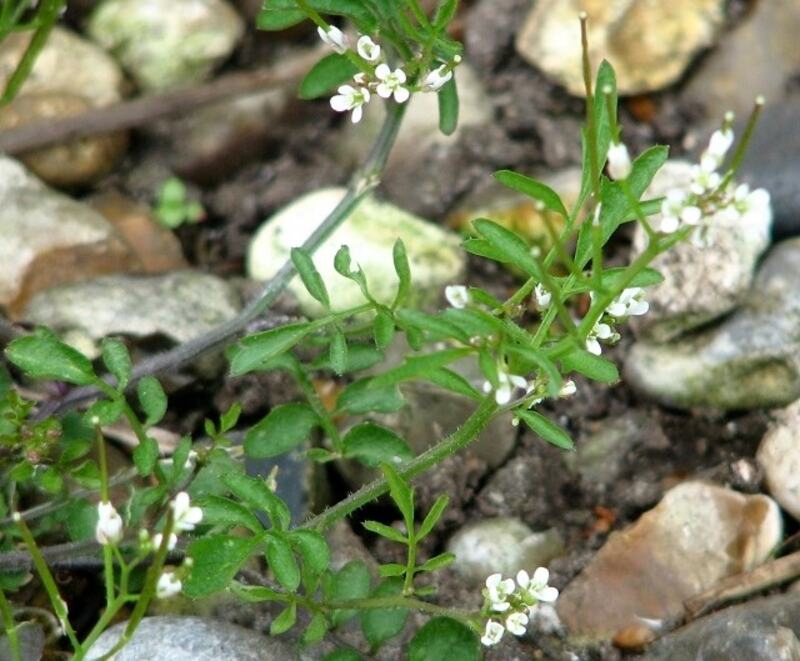
Smallflower bittercress is an herbaceous plant that flowers from mid-April to early July. They have upright stems with loose clusters of white flowers. It is typically found in dry soil in both shade and sunlight. It’s so delicate that it can’t push its way through leaf mold or complete with much vegetation.
Cardamine, the word in its scientific name, comes from the Greek term kardamon, which refers to plants in the cress family. Parviflora, on the other hand, means “small-flowered” in Latin.
- Life cycle: Annual or biennial
- Weed type: Broadleaf
- Where it thrives: Dry to mesic soils on rocky slopes and around bedrock; nutrient-rich rocks and/or soils
- How to identify smallflower bittercress: Stems are upright to spreading; flowers are white and in a loose, branched cluster with four petals.
Don’t let this weed sour your mood. Learn to get rid of bittercress by reading our article.
Sedges
They may look like grasses, but sedges are actually aggressive and competitive weeds that are of little economic value to humans. Not even Antarctica is immune to sedges, with the continent host to an invasive species. Some sedge species are inaccurately called “nut-grass.”
Here is the most common sedge in South Carolina:
15. Yellow Nutsedge (Cyperus esculentus)
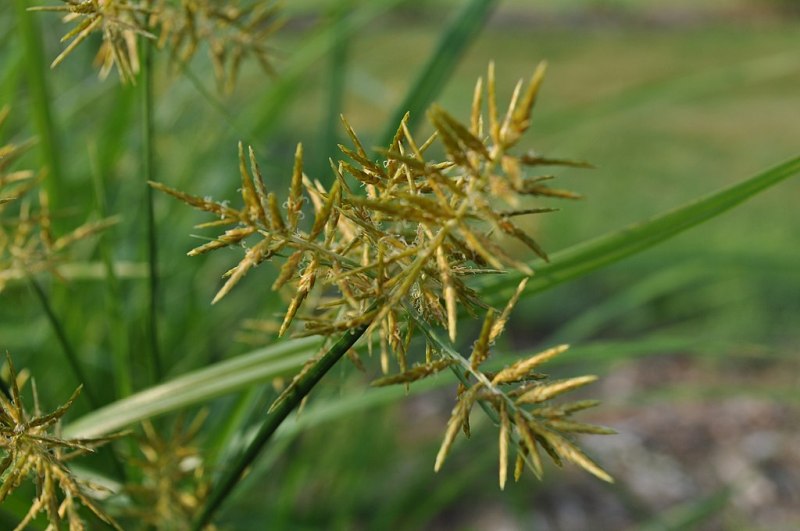
Yellow nutsedge is a grass-like weed that thrives in warmer climates with full sun and plenty of moisture, including wet, soggy lawns. The leaves are glossy green with yellow flower structures that extend above the mature plants. Nutsedge commonly infests lawns and flower or vegetable gardens, competing for space, nutrients, and water.
Nutsedges are quite persistent and aggressive and can be very difficult to eradicate since most herbicides for controlling grasses are ineffective on sedges. Pulling these weeds may leave broken roots that form other roots in their place. Tubers that remain in the ground can re-sprout up to 12 times.
- Life cycle: Perennial
- Weed type: Sedge
- Where it thrives: Poorly drained soils
- How to identify yellow nutsedge: Has glossy, grass-like leaves and a triangular stem, with leaves coming off at 120-degree angles.
Read how to get rid of nutsedge to discover the best ways to eliminate this persistent weed from your yard.
FAQ About Weeds in South Carolina
What’s the Difference Between Annual, Biennial, and Perennial Weeds?
Here are the key differences among these three different weed types:
- Annual weeds: Germinate, grow, and die within 12 months. Found in two types:
- Summer annuals: Grow through summer and die at the start of cold weather
- Winter annuals: Grow through the winter and die during early summer
- Perennial weeds: Grow for two or more years and reproduce through bulbs, tubers, rhizomes, or stolons (although some spread through seeds). They are the most difficult to control.
- Biennial weeds: Complete their life cycle over two growing seasons. The first year, these weeds develop leaves, which store food. The second year, biennial weeds produce fruit and seeds.
How Are “Grass-Like” Sedges Different From Grassy Weeds?
Grass-like sedges can be identified by their tall, flower-bearing stems. However, they do not reproduce by seeds. Compared to grasses that have round and hollow stems, sedges have triangular and solid stems.
Can Weeds be Beneficial?
Yes, in fact, there are such things as medicinal and edible weeds, like:
- Common chickweed
- Broadleaf plantain
- Dandelion
- Burdock
- Wild garlic
Hire a Pro
Looking for a pro in South Carolina to remove those weeds? Let Lawnstarter connect you with lawn care professionals in your area today.
Main Image Credit: Andreas Rockstein / Flickr / CC BY-SA 2.0

